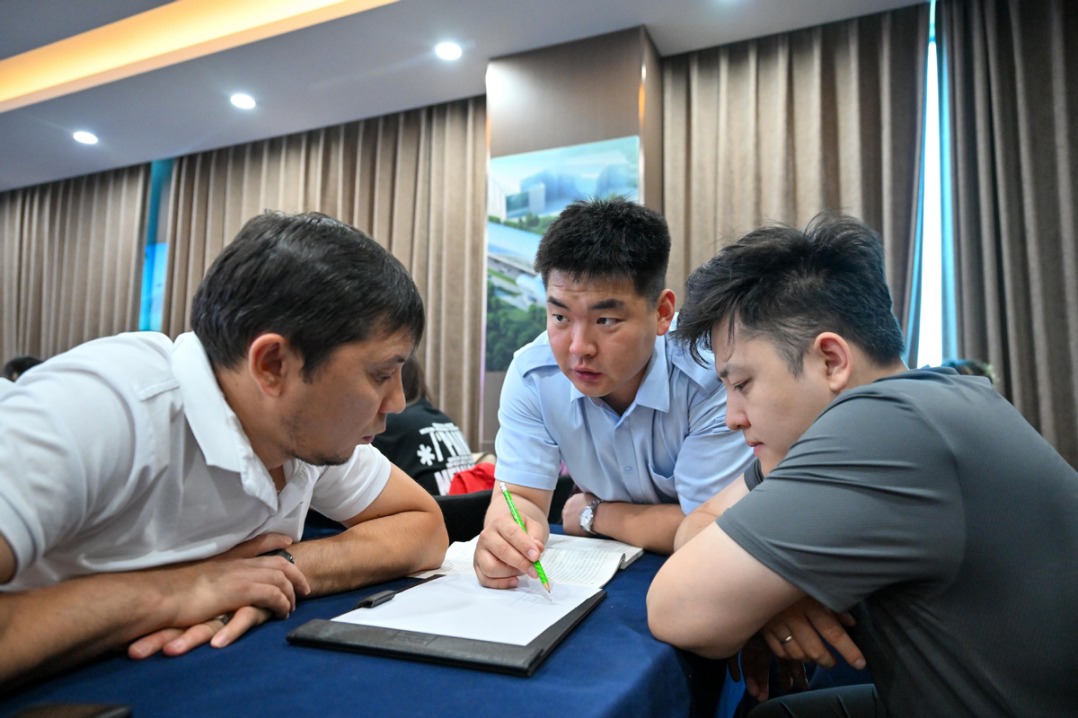Community conservation leads the way for Yunnan's 'Noah's Ark'


Since my retirement from the Chinese University of Hong Kong in 2013, I have spent most of my time traveling around Yunnan, my home province.
My walks have taken me to some extraordinary conservation work that has given me a chance to see incredible wildlife.
My training in adult and continuing education spontaneously pushed me to think about engaging local people in conservation work.
With funding from civil society organizations (aka NGOs) we set up a Noah's Ark project and engaged scientists from the Lijiang Alpine Botanical Garden. Researchers developed fine-breeding technology for two dozen endangered herbs with high market value, and together we introduced the technology and farm management to villagers via training.
The income they made from growing herbs in their own fields tripled. The local people no longer need to locate rare species in the wild and endure the hardship of climbing and searching for them because they can breed them at home.
With the aid of a civil society organization for experiments, the conservation of wild herbs has become viable in northwestern Yunnan and the Xishuangbanna Dai autonomous prefecture, along with community participation.
Saving the seriously endangered Chinese green peafowl (there were less than 500 in the whole of China in 2017) has been another rewarding experience.
Some years ago, I traveled with friends into the pristine forests of the Ailao Mountains along the Red River. Yang Xing, head of a grassroots bird-watching association, told me that he had seen green peafowls on the upper reaches of the river while he was wandering.
A dialogue between CSOs started in early 2017. At that time, I could not even distinguish the Indian blue peafowl (Pavo cristatus) and the Chinese native green peafowl (Pavo muticus). The former had been raised in their thousands for tourism in Xishuangbanna and by zoos across China, while the latter had a very limited population.
So we reached out to experts, including Han Lianxian, a professor and the International Union for Conservation of Nature's expert on pheasants in China, Yang Xiaojun, an IUCN expert on green peafowls, and officials in government wildlife offices. We discussed with them how the green peafowl could be saved.
Han suggested there were three primary conditions for survival: food; water; and shelter.
Our conversation ended in the formation of the Green Peafowl Protection Committee of all stakeholders. We held face-to-face meetings with grassroots civil society foundations, scientists and local authorities to discuss conservation strategies.
When we presented our proposal to a company in Shanghai that provides corporate social responsibility investment, it immediately promised 500,000 yuan ($78,000) per annum for five years. Then, a ranger team was organized and trained, and infrared cameras were set up.
Starting in 2018, small patches of the green peafowls' habitat were protected through joint efforts. Soon, it became a demonstration area, and an alliance was formed.
It was wonderful to hear from our rangers that 53 chicks had been hatched. The government recently announced that the population of green peafowls in China has risen to between 550 and 600.
You can imagine how proud all the stakeholders are of their contributions. Things were not easy when the first mandatory orders such as "No poaching" and "No tree cutting" were sent to the villages by the top authorities.
This year, a herd of elephants surprised the world by wandering northward, from Pu'er to the edge of Kunming (Yunnan's capital), where the 15th meeting of the Conference of the Parties to the Convention on Biological Diversity was held.
The event furthered public discussion of how to maintain a harmonious relationship with the huge animals, whose number has doubled to 300 in the past 30 years.
Nature-based solutions need action from every community. Saving endangered species requires all hands to integrate resources for our shared goals.
The local people know every trail in the deep woods, and their knowledge has bought much time for biodiversity planning and action.
I like my role as a coordinator and facilitator. I am also proud that Yunnan people are playing a leading role in reversing dwindling biodiversity and ensuring that a harmonious relationship between nature and humans is on the way.
- Beijing repurposes seats used for V-Day celebration
- Earthquake leaves 6 miners trapped in Heilongjiang
- China firmly upholds red line for farmland protection
- China achieves major breakthroughs in oil, gas, uranium exploration: official
- 2 rescued, 6 trapped after coal mine accident in Northeast China
- Light-rail driver training session for Kazakh trainees held in Tianjin





































